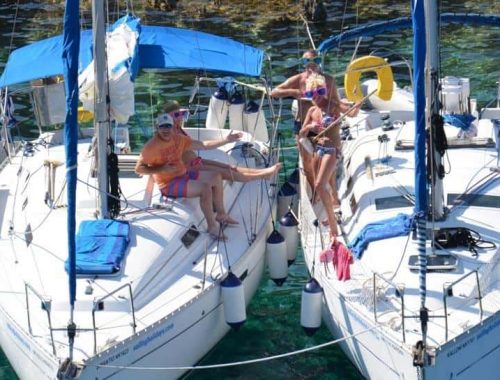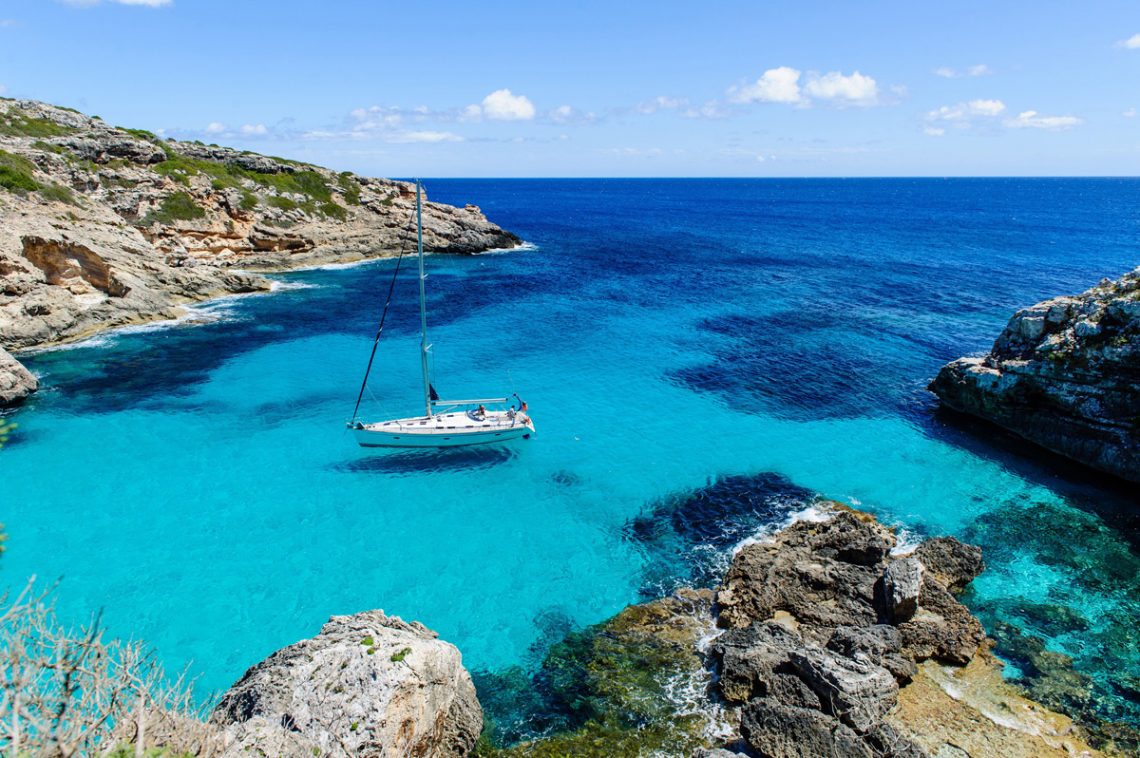
How to anchor safely and enjoy the bays
Anchoring is more than just dropping the anchor and hoping for the best. Anchors operate in an imperfect world, such as a bay filled with downwind rocks, a stubborn engine or a strong tide that renders our boat’s sails useless. In such situations, the science and discipline of anchoring becomes the last desperate defense against disaster.
A well-sized anchor is like an ant: it can hold a hull weighing 1,000 times its weight and even more. For instance, a 5-ton sailboat might have an anchor weighing less than 5 kg. However, it’s the hydrodynamics, the marine weather conditions, and the very design of the anchor that play determining roles. Dropping a stone into the sea, as was done in the Bronze Age, will have a minimal effect on anchoring. It’s the anchor’s flukes that dig into the seabed, providing resistance and safety for the boat. Ingeniously, when the boat pulls the rope-chain ensemble after dropping the anchor, the anchor digs deeper into the seabed. To do this effectively, it needs a sufficient length of chain and scope to create a horizontal force and act as a shock absorber. If the pull becomes too vertical, the anchor’s grip will fail. To calculate the correct scope, take the maximum depth of the seabed and multiply this number by at least three. For longer stays in exposed anchorages, a 5:1 ratio is recommended, which can extend up to 7:1.
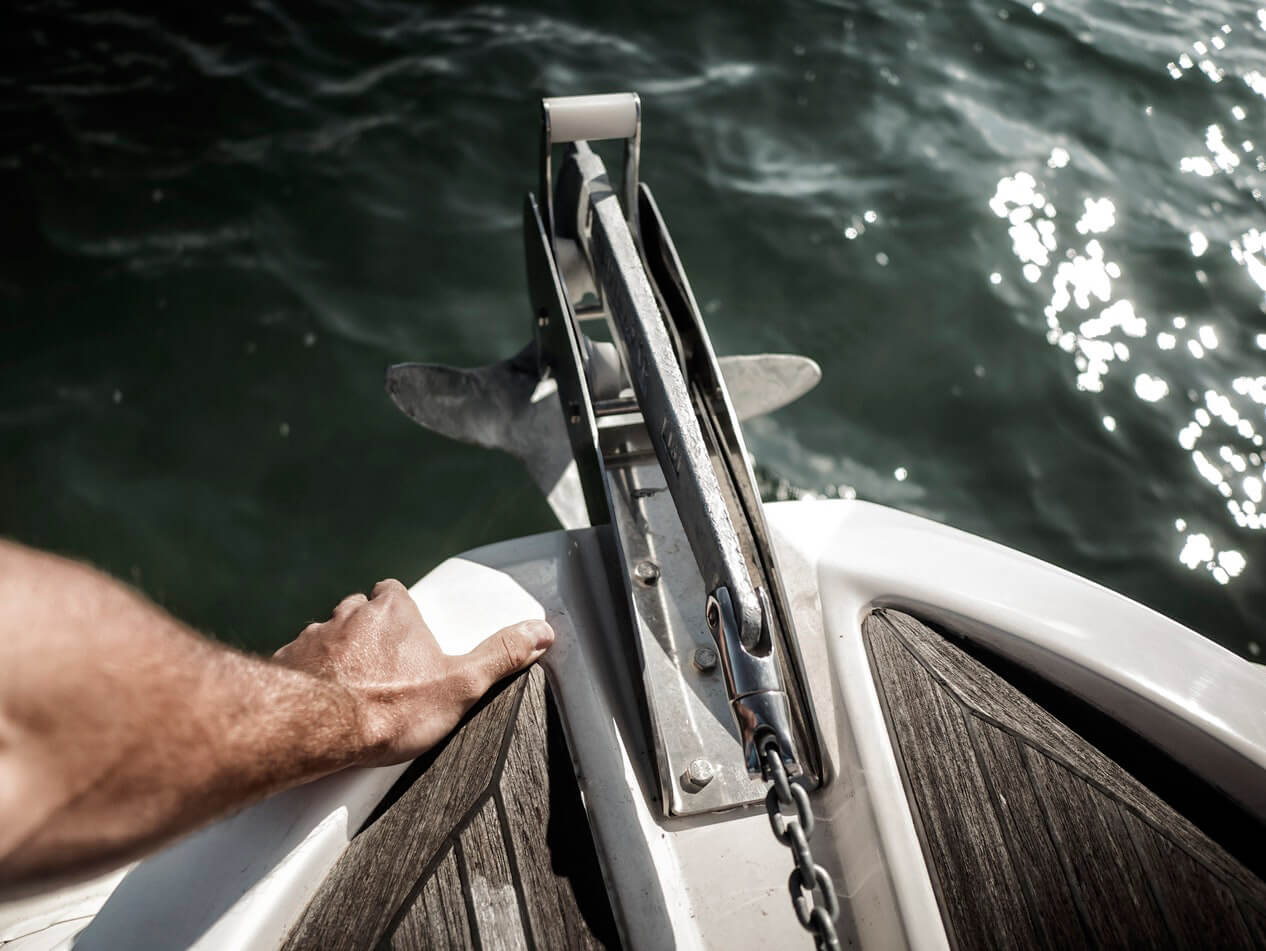
How much chain length is needed?
While an all-chain anchor line can only be used over rocky bottoms due to the risk of abrasion, a combination of chain and rope is a sensible compromise to save on weight and costs. But just how much chain should one use? Some suggest anywhere from half to the full length of the boat. A common rule of thumb is 2.5 meters of chain for boats under 6 meters and at least 10 meters of chain for anything larger. The size of the chain links is another crucial factor. For smaller vessels, diameters of 5 to 6 millimeters are sufficient, while for larger vessels, you’re looking at 8-10 mm and up. Regarding shackles, a slightly larger diameter is recommended.

Safety first, a swim in the bay later
As many crews enter a bay for anchorage, it’s easy to be captivated by the destination and surroundings: the palm-fringed beach, the quaint beach shack, the natural pools. However, the key factors that truly need attention during this crucial phase are the water’s depth, the type of seabed, potential underwater hazards, exposure to wind and currents, and maneuvering space. Nautical charts often provide insights into the ideal location, and the presence of similar boats in specific spots can be reassuring. Understanding your boat’s draft, as well as tidal patterns, are also crucial. Be on the lookout for signs onshore warning of underwater cables, and if possible, avoid anchoring on coral, seaweed, seagrass beds and/or rocks.
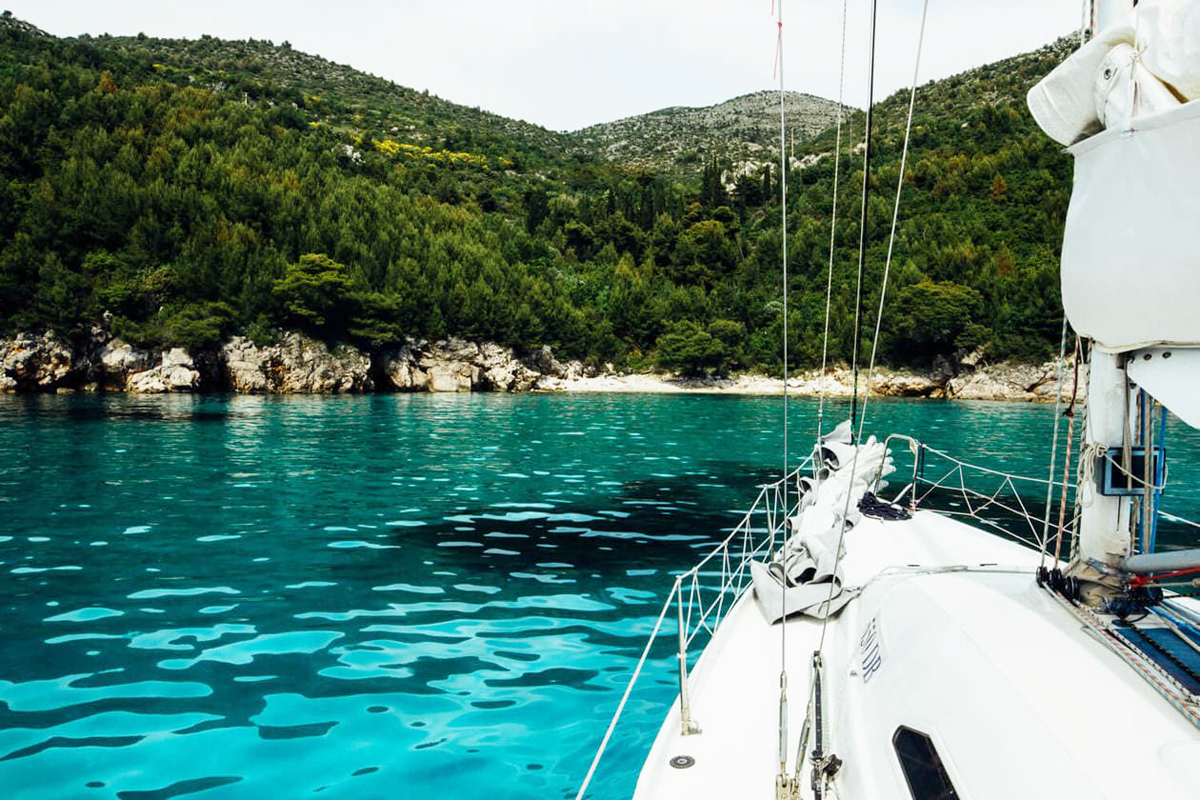
Steps to perfect anchoring
Approach your chosen anchorage bay with slow and deliberate care. Polarized sunglasses can be invaluable for the skipper during this phase, as can circling the planned anchoring spot to gather more information and reassurance. Ensure the anchor is ready while monitoring the depth gauge. When you’ve found the desired spot, don’t simply drop the anchor and chain. Instead, move forward one or two boat lengths before lowering the anchor to the seabed. Engage in reverse as you progressively release the chain and rope to achieve the desired scope. Always perform this final engine test against the prevailing wind or tide, noting the direction other boats are facing.
It’s a wise move to don a face mask and dive down to the anchor, if feasible, or peek over the side of your dinghy to ensure the anchor has settled and secured its grip.

Consistently monitor your boat’s position
After securing your boat, its electronics can serve as vigilant guards. If your GPS has an anchor alarm, set it to alert you if the boat drifts significantly from its original position. Electronic compasses and autopilots can also signal if the boat’s position shifts dramatically, while a depth finder should have a shallow depth alarm.
At night, ensure that the anchor lights are on so other vessels can spot you. A single all-round white light with a visibility of at least 2 nautical miles is suitable. Also, remember that anchoring in navigation channels or tying up to navigation markers like channel markers or buoys is prohibited.
You May Also Like

Leeward Islands: the tropical dream of French Polynesia
29/11/2023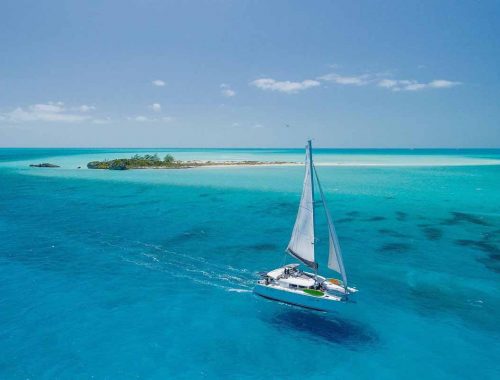
Sail and explore the Exuma Islands in the Bahamas for tropical delights
30/11/2023